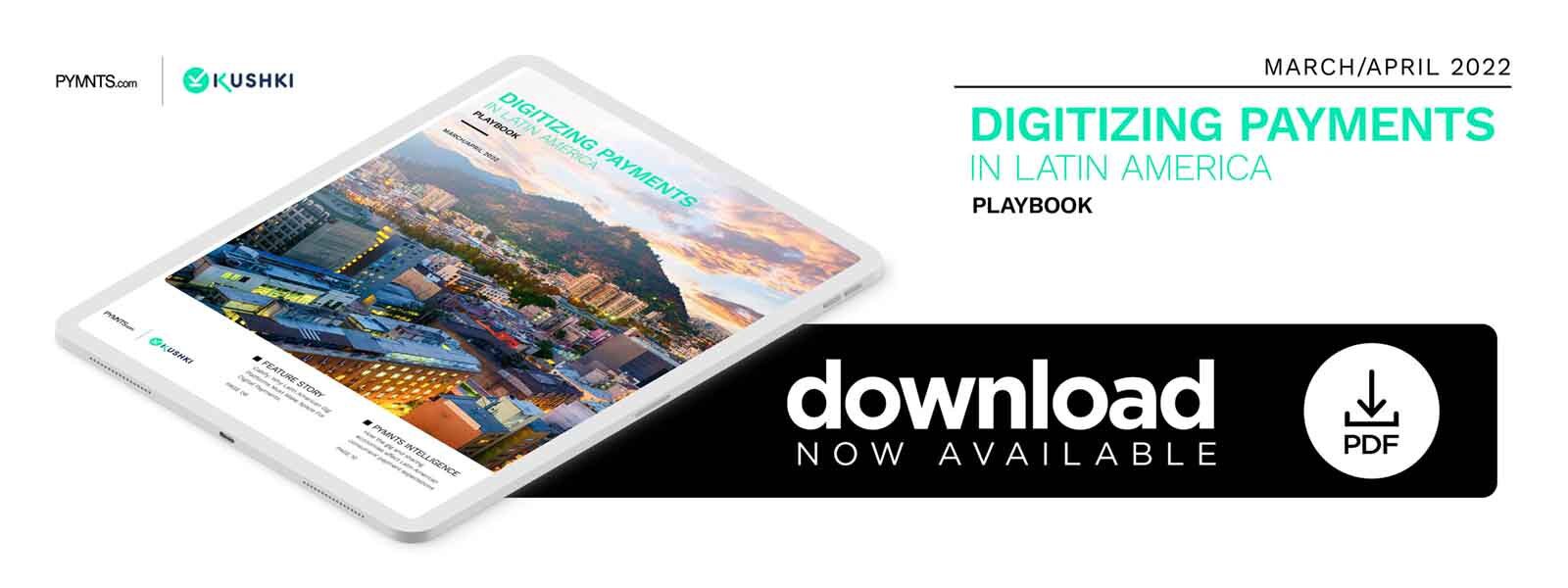Cabify: Why Latin American Gig Platforms Must Make Space for Digital Payments

As Latin America’s gig economy expands, these same employees are also looking for flexibility and convenience in how they’re paid. In PYMNTS new “Digitizing Payments In Latin America Playbook,” Cabify’s Ruth Sosa explains how the rideshare company is offering payment tools that balance the strengths of cash and digital money while also bolstering workers’ loyalty.
Workers worldwide turned to the gig economy during the pandemic in the face of economic uncertainty. Gig work continues to see rapid growth, especially in regions such as Latin America, where the population is also swiftly gaining access to digital banking and payment solutions.
Participation in mobility-focused areas, such as ridesharing or eCommerce delivery via courier, has especially increased year over year, according to Ruth Sosa, head of product, finance for Latin American rideshare company Cabify. This surge means that platforms in the sharing economy must ensure they can offer gig workers the payment experiences they are expecting as demand for digital payments rises throughout the region.
“[Gig workers’] ideal payment form is one that brings them the liquidity of cash with the safety of electronic payments,” Sosa told PYMNTS in a recent interview.
Achieving that balance is critical for Latin American gig platforms as the sharing economy becomes more highly saturated. Supporting a diverse range of unique payment options — for both workers and customers — will be crucial to remaining competitive.
Making Space for Emerging Payments
Latin American workers seeking more flexible income opportunities are driving up demand for gig work, and the supply of platforms in the region is rising in response. Rideshares and other gig mobility services must offer a seamless payment experience to both drivers and customers or risk losing potential participants to competitors.
“Sharing economy participants can now choose among a larger set of platforms and occupations, which, in turn, is empowering them and forcing every platform to do better with them,” Sosa said.
This makes it key for gig platforms to be able to offer their drivers and couriers a convenient payment experience, the definition of which requires a keen understanding of Latin American payment developments. Many Latin Americans remain unbanked, Sosa explained, meaning that they still rely on cash to fulfill many of their financial needs.
Supporting both cash payments and the digital payment tools that are growing more popular across the region can help platforms keep their riders, as well as their workers, engaged and satisfied. Cabify supports cash payments for riders and has recently moved to integrate several digital payment options, including local debit cards for riders in Chile, Sosa said.
The company also allows customers in Peru to pay with Yape, a QR code-based peer-to-peer (P2P) payment solution.
“In some countries, due to particularly closed banking ecosystems, drivers carry card readers so customers can pay physically with the cards in the car,” Sosa said. “Overall, we are adding about two new forms of payment every year … which I think gives an idea of how fast the payment ecosystem is moving in the region.”
Bringing that same flexibility to gig workers’ payments is likely to be the next great challenge for Latin American sharing economy companies as the market continues to expand.
Prepping for the Gig Economy’s Future
Taking steps to offer digitally optimized payments to both riders and workers will be key for sharing economy platforms in the near future, especially as Latin Americans’ work and payment preferences continue to evolve. Digital banking is becoming more popular throughout the region — a development that could significantly impact the way individuals wish to make and receive payments, Sosa said.
“The experience provided by all-digital banking will shape many trends in the future for the whole industry, [similar to what] happened with mobile phones versus landlines in some other areas of the world,” she explained.
Keeping pace with digital payment developments, as well as finding ways to support local payment solutions, will be vital to the gig economy’s continued success across Latin America. Gig platforms must take steps to support such payments and match consumers’ expectations accordingly.
